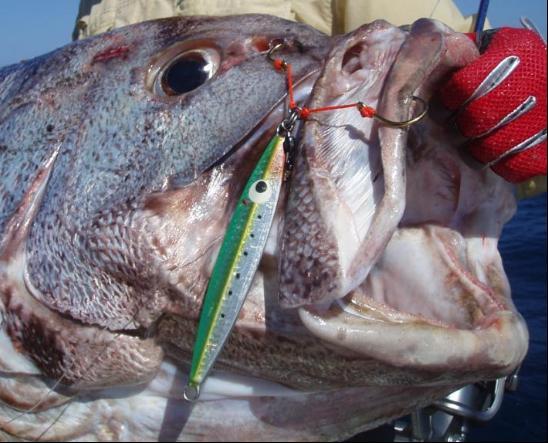I regularly get contacted by people seeking recommendations for poppers so I have again decided that perhaps I'll simply start a thread on it with some of my views and we can go from there. It's easiest than typing similar e-mails.
In a nutshell, poppers are available at prices ranging from bargain basement to absolutely scary. At the cheapest end are unmentionables which I do not recommend to the top end where the lures are pretty much unobtainable. At this end, I'm not just referring to lures like Carpenters and Craftbaits but the limited edition pieces from these manufacturers which we will almost never see. These generally tend to be very limited lures made of materials like abalone shell. Some of you may have seen Craftbaits abalone shell GT2 but you see the odd very limited offering from Carpenter in this material as well. The most amazing one I have seen is a Shell Shaping lures using mother of pearl shell. On the other hand, Carpenter went down the other end and produced a limited edition Sea Frog which was in natural colours (not painted).
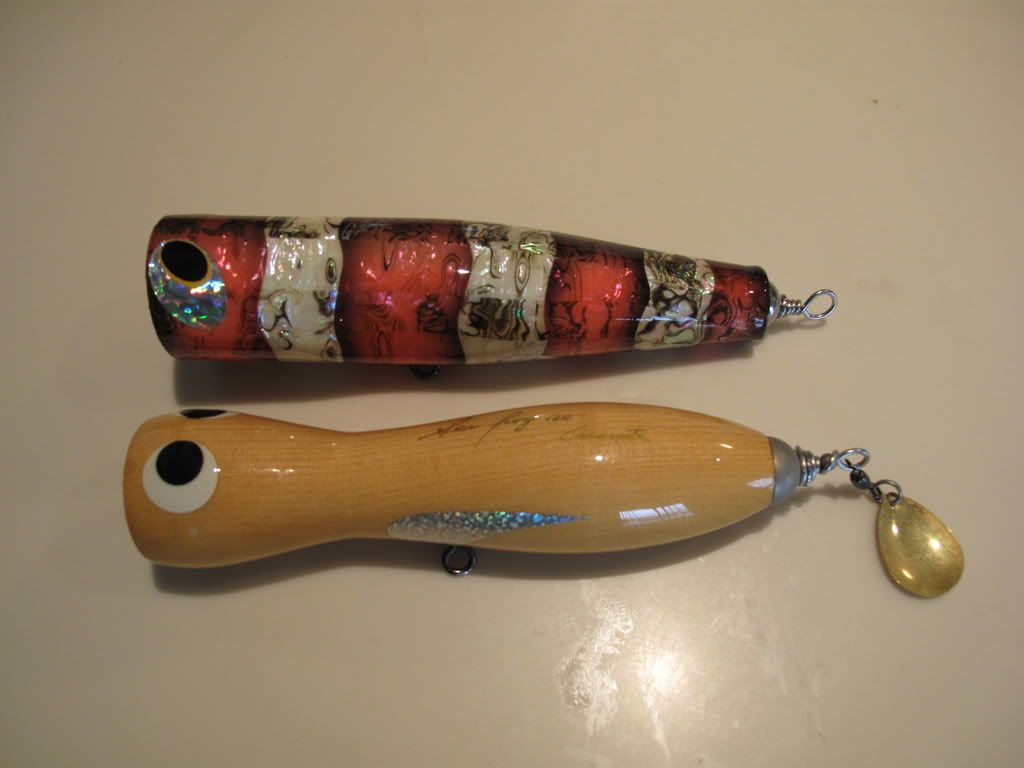 Limited edition Shell Shaping lure Glans and Sea Frog
Limited edition Shell Shaping lure Glans and Sea FrogThere is a general assumption that you get what you pay for. I suppose my opinion on this is that while there is some semblance of fact to this, it is not a rule that should be followed by any stretch of the imagination. I have seen very expensive poppers and stickbaits which don't swim and I have also seen very expensive lures where the construction of the lure has been severely compromised by one fish. I'm not convinced that some of these lures have ever been tested! One very expensive stickbait offering that come out about 12 o 18 months ago was such that I don't even think Kenji Konishi could make it swim properly! That said, the best of the premium poppers are truly at the top end of the industry indeed.
We get a number of poppers in Australia which are being priced at silly levels for a poor product. I feel sorry for anyone who has paid the $60 to $80 being demanded for a particular wooden popper (they're everywhere in shops) when I've seen these in Singapore and Thailand for 1/3 the price. They look well finished but the finish gets scratched off by the hooks and before you know it, the lure is waterlogged.
In terms of lures I do recommend (and I'll work upwards from most reasonably priced to sell your kids but please note - the scale is on price, not performance), the entry level would be with lures like the Halco Roosta, River2Sea Dumbbell and Yo-Zuri poppers like the surface cruiser and GT Bull. These lures are proven GT catchers but anglers using these should consider changing the terminals. Also, I have seen Dumbbells broken by GTs but I believe the incidences of these are lower than what people think. Another lure I will mention here is the Jai Bighead. A very reasonably priced lur that is a proven fish catcher.
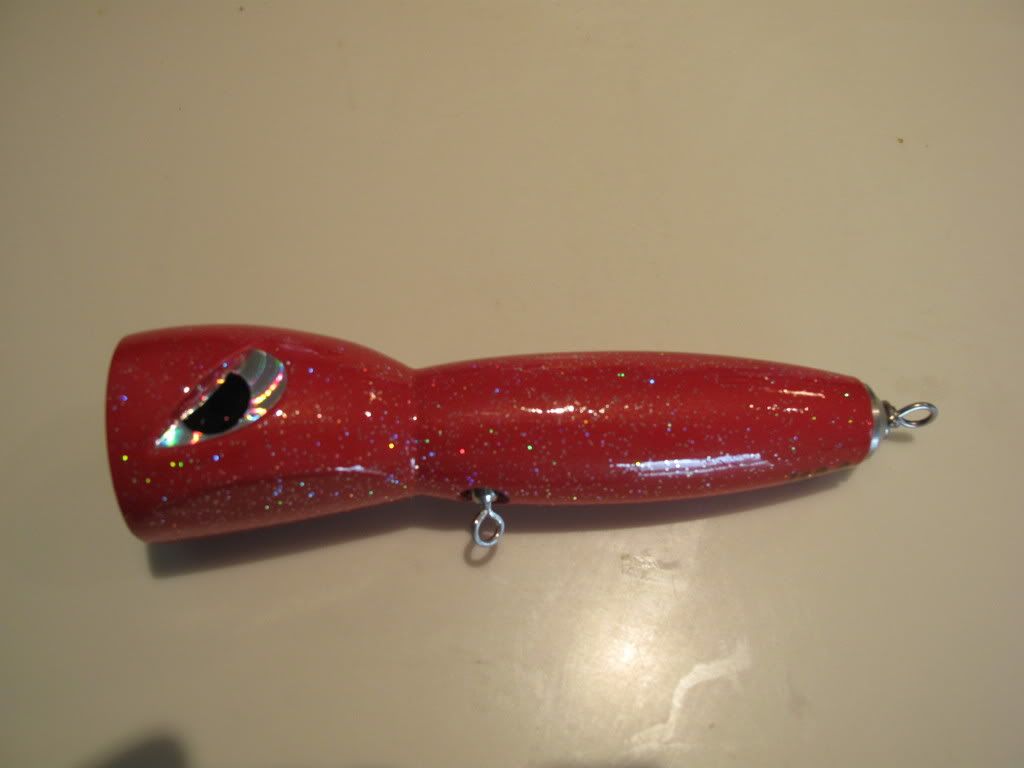 Jai Bighead 130
Jai Bighead 130In the next price group up from this are the Heru lures. These are marketed in Australia as Nomad or Blackjack lures. There are also available in SE Asia under different names. These are among my most highly recommended lures, especially the Cubera popper and the Wahoo/Dogtooth stickbait for the simple reason that they're well priced and they work. I can't say enough about these because they're well-constructed and finished and in the case of the cubera, a brilliantly effective popper. The wiring is also excellent. I won't deny I would still use a SS Glans in preference to this but I think you get my drift. I know someone mentioned that they had the middle swivel drop out of the belly on one but I have absolutely no doubt whatsoever that the distributors of the lures in AUstralia would replace them without batting an eyelid.
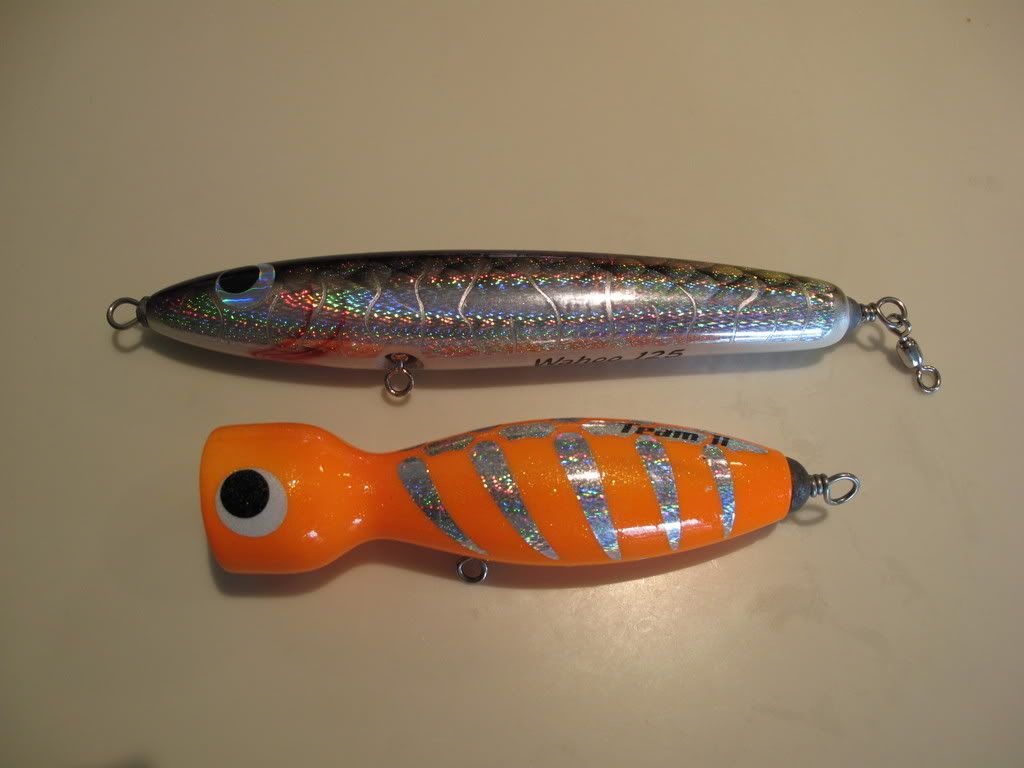 Heru Wahoo and Cubera (from top)
Heru Wahoo and Cubera (from top)A bit higher in price than these are the Adhek poppers which are available around Australia if you look hard. Adheks, particularly those with the holographic finish are a brilliant looking lure and are incredibly strong in terms of the wood used and the holographic finish. Wiring is adequate without being outstanding. Adhek makes a range of poppers and I have used most of them. They're also a proven fish catcher but my favourite lures in the range is the Adhek Long Goby. The Goby was designed as a stickbait but can I say, it has proven itself to be one of the most effective lures around Bugatti. You can fish this by simply casting it out and reeling it in at a reasonably high speed. It is almost what I would describe as a skittering popper - sort of a combination between a pencil popper and a stickbait.
 Bigfoot, Flapper, Big Jim, ConoCono and T-Rex (from top)
Bigfoot, Flapper, Big Jim, ConoCono and T-Rex (from top)At the next price level, I'll put a locally made popper which I have been heavily involved in testing being Chris Young's Fullscale poppers. I know some people locally have baulked and commented on the price but my response to that is in comparison to the top end of the premium Japanese poppers, Chris' lures are half the price now and as I have established, every bit as effective, if not more so than many of these brands. Chris' lures are entirely handmade and have the strongest wiring of any popper on the market and are constructed with absolutely no compromise for big fish. Let me put it this way - if I am popping the edge of a deep shelf for monster class GTs, a big Fullscale Kong would be the first lure I reach for. The great thing about the Kong is that it is easy to pop and produces a big pop and a lot of presence in the water for its weight.
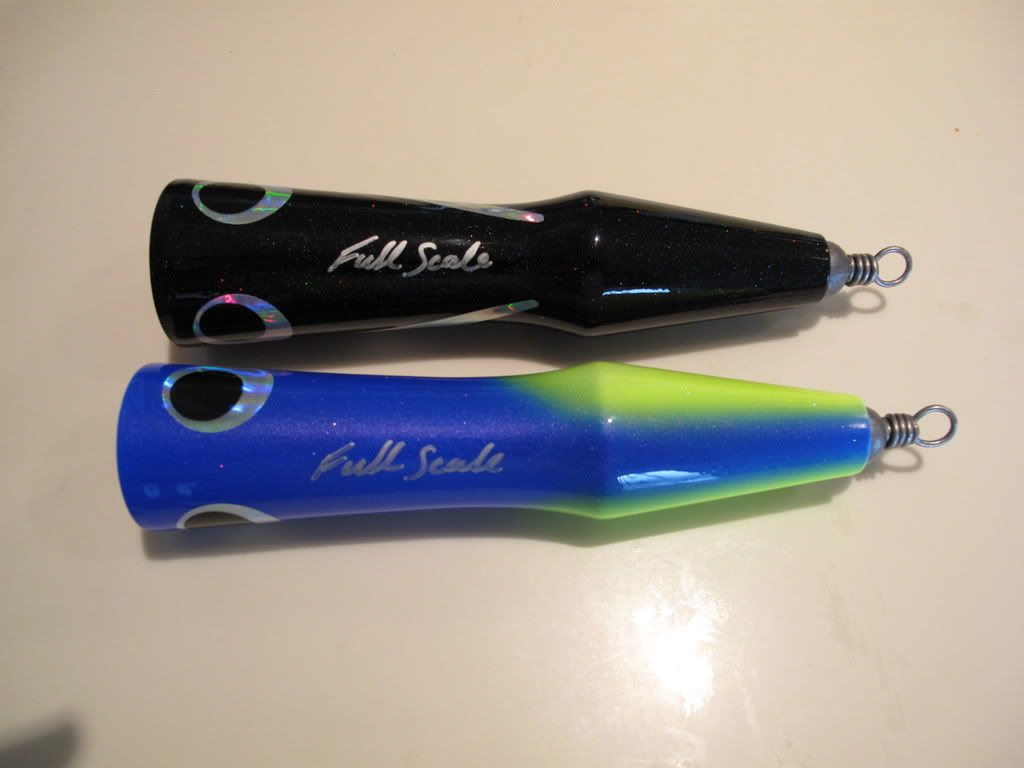 Fullscale Kongs
Fullscale Kongswe are now reaching into the entry level of the premium Japanese poppers like Fisherman. Fisherman lures are well known and need no introduction in any company. They're cheaper than many of the super premiums but they're not finished to the same degree. These lures are reasonably widely available but the more popular models cam be hard to find. I'll mention two - the giant Bigmouth HP tails (200g and 220g) is a favourite for big GTs and with the heavy HP tail, they pop beautifully in heavy conditions. FIsherman also make what would probably be the most famous pencil popper of all - the Fisherman Long Pen.
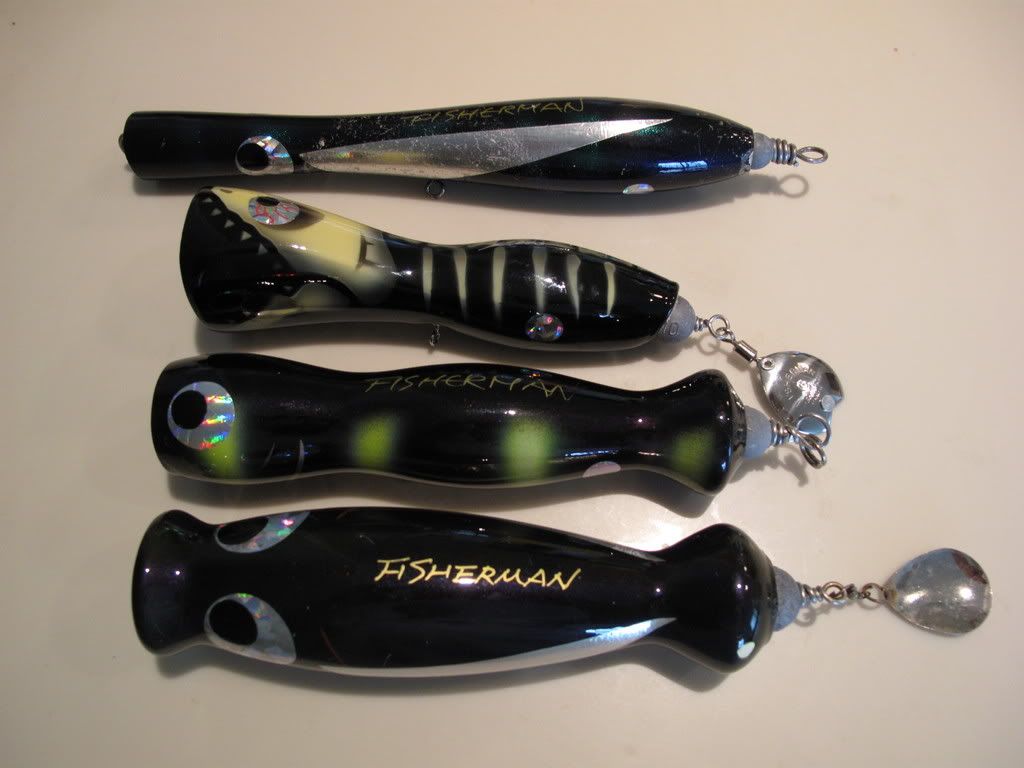 Long Pen, Krog Bigmouth, S-Pop 160 with HP Tail, Bigmouth 220 with HP Tail (from top)
Long Pen, Krog Bigmouth, S-Pop 160 with HP Tail, Bigmouth 220 with HP Tail (from top)In the super premium level, you have poppers like Carpenter, Craftbait, Hammerhead and other producers which I won't go into. I don't need to go into these in any detail. The Carpenter Sea Frog needs no introduction and while it is a brilliant lure, I think that a ridiculous mystique has developed around them due to the fact that they are so hard to obtain. Craftbaits are beautifully finished and have a unique wiring system and are reasonably available. It looks awesomely strong but there have been isolated incidences of it failing. Hammerheads are another legendary popper but the big models are hard work. The E cup is a good size as it is still easy to pop and not too painful! Mind you, if you are focussing on BIG fish, the I Cup is a proven performer.
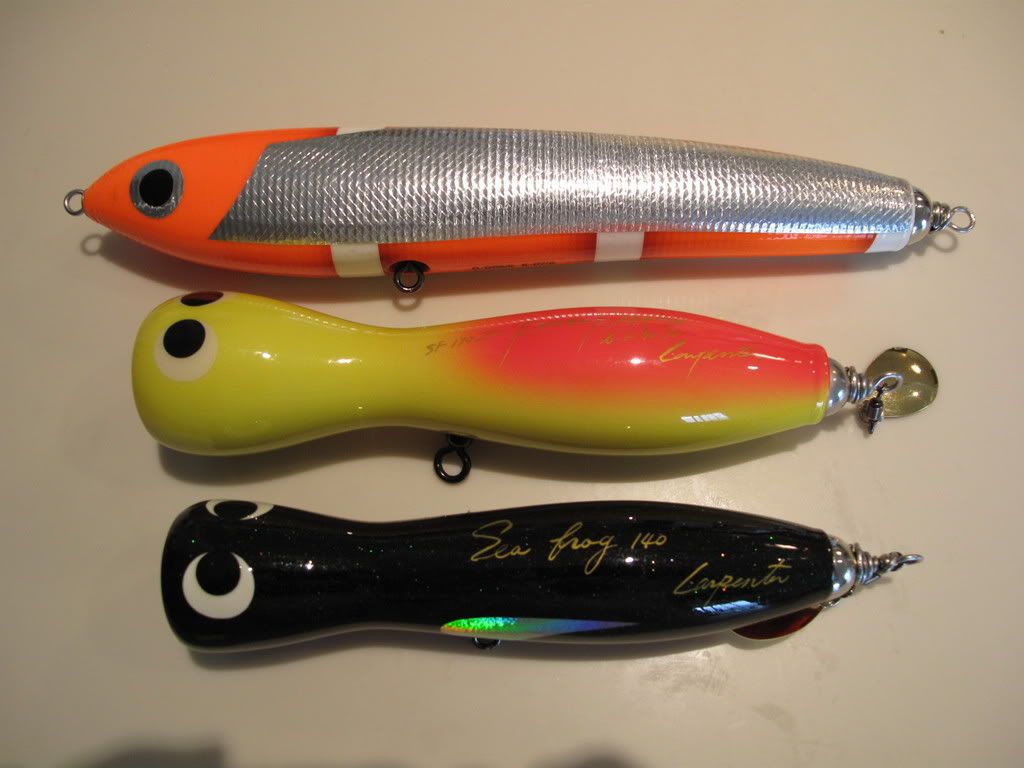 Carpenter Gamma 200, Sea Frog 170, Sea Frog 140 (from top)
Carpenter Gamma 200, Sea Frog 170, Sea Frog 140 (from top)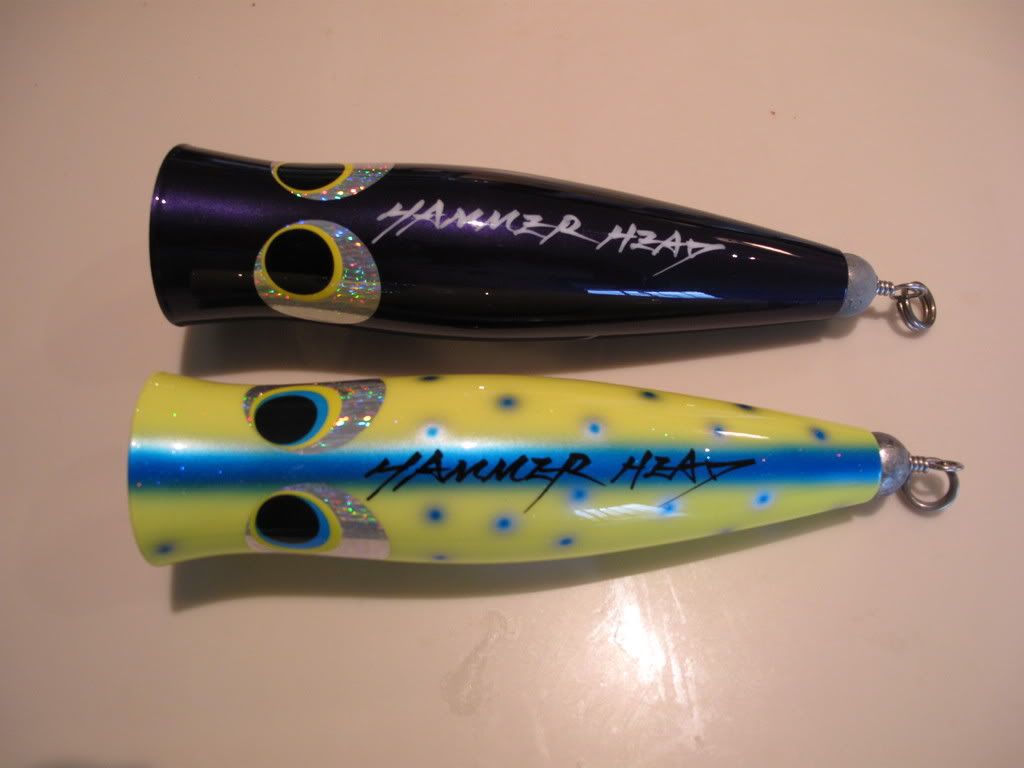 Hammerhead I Cup, Hammerhead G CUp (from top)
Hammerhead I Cup, Hammerhead G CUp (from top)The one point I will make about Japanese poppers is that they are not all finished to the same standards. Pick up a Craftbait and compare it to another lure and it will be so apparent the standard of care which Craftbait work to. There are also others where the finish can be a bit agricultural but the prices are huge. I'm not going to cast any aspersions on brands so I will leave it up to you all to make your own observations. The highest standards of finish I have seen are a tiny company called SS lures. The finish on each lure can only be described as amazing.
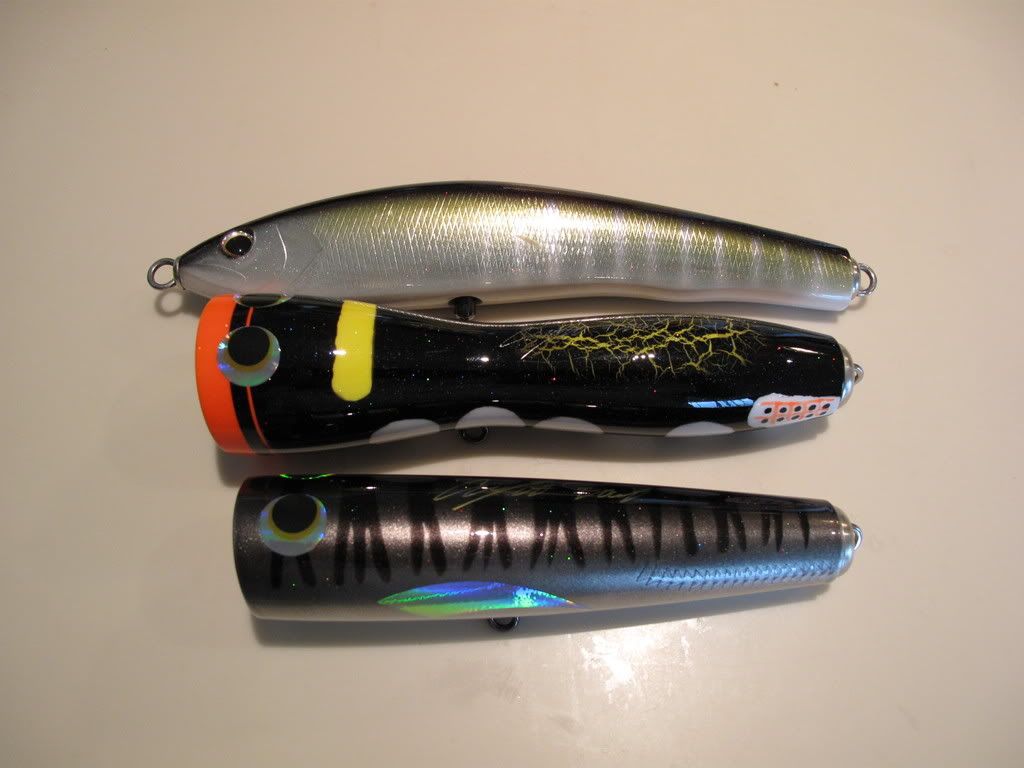 Craftbait Realbait, GT3, GT2 (from top)
Craftbait Realbait, GT3, GT2 (from top)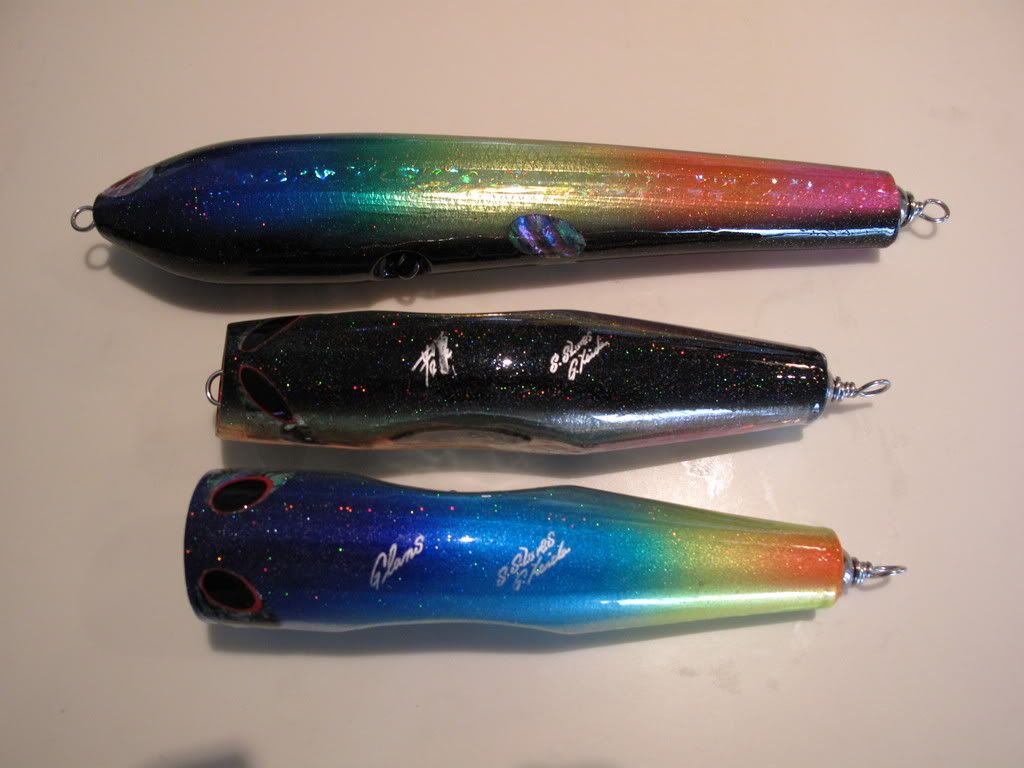 Shell Shaping Lures - probably the industry standard in terms of finish
Shell Shaping Lures - probably the industry standard in terms of finish We have touched on the current price of Japanese poppers on a couple of threads of late. Most of these poppers retail in Japan for prices ranging from about 5500 to nearly 8000 JPY. Based on current exchange rates, that means the retail prices of these lures in Japan is roughly $95 to nearly $140 AUD. As you would expect, we pay a bit more here for obvious reasons and I have seen Hammerheads locally selling for prices up to $200. Losing six lures would make for an expensive trip!
There is no doubt that in putting a balanced tackle bag together that we all like to at least have some of the premiums in there. Just remember that you don't need to sell the kids to get lures that will perform to very high standards.
 --
-- --
--
 --
-- --
-- --
--